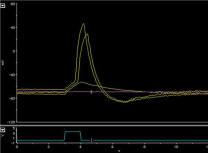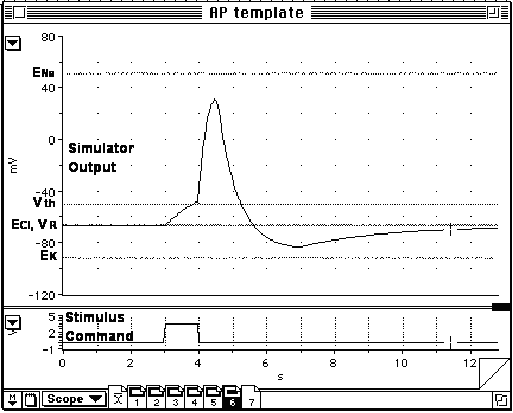Continuous Equivalent Circuit
Action Potential Model


This board is a variant of the Gated Equivalent Circuit Model (GECM) board. Sodium, potassium, and chloride again have separate conductance routes across the membrane and independent equilibrium potentials provided by three DC voltage supplies. The fixed parallel resistances and H-H m, h, and n switches have been replaced by linear, audio-taper potentiometers. These potentiometers are manually operated by the student to generate a trace which approximates the time course of the action potential, stretched to more than 6 seconds. Membrane capacitance can be set to a variety of values by three switches connected to three capacitors wired in parallel. An initial "PSP" can be manually or automatically triggered via a parallel "stimulus" circuit. A 40MW resitance on the "intracellular" output lead is used to step down the output voltage and to provide impedance-matching with the PowerLab recording system.
(GECM template - corresponding CECM template not yet posted)
This board has not yet been incorporated into a laboratory exercise. In such an exercise students could be tasked with manipulating the potentiometers to match a pre-existing AP template. In the course of doing this, students would get a hands-on appreciation for how sodium and potassium conductance changes determine the time-course of the action potential. This could logically either precede or follow use of the GECM model.

